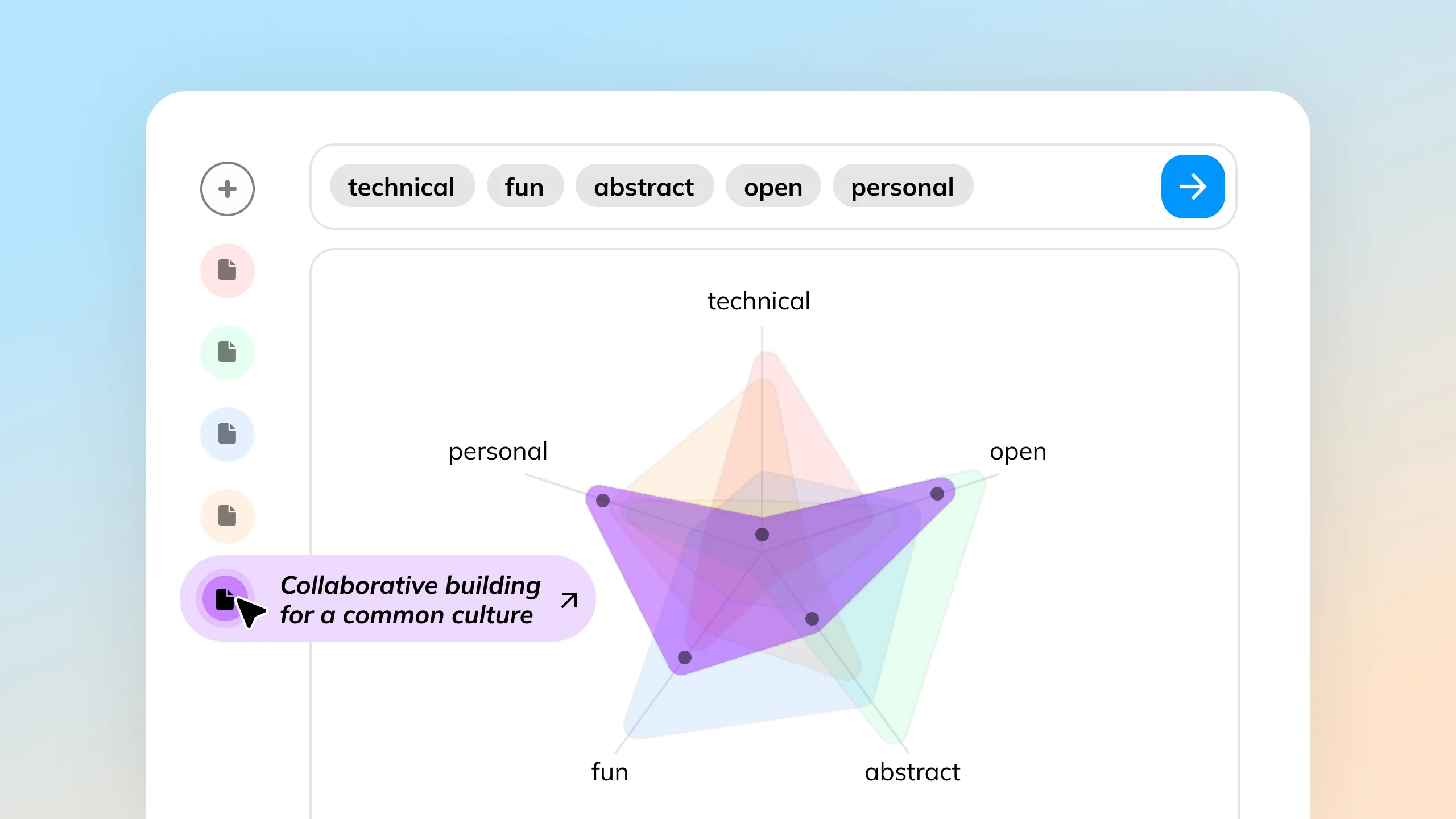Evolving outputs
Generating multiple outputs and iteratively using selected ones as new inputs helps people uncover ideas and solutions, even without clear direction.


When exploring options, I want multiple outputs to help me refine my preferences and narrow down what I am looking for, so I can achieve more satisfactory outcomes.


- Patterns overtime: Using preferred outputs as new inputs creates a trajectory that an AI model can recognize and leverage, generating increasingly refined and relevant outputs.
- Exploring Suggestions: The process of making suggestions and progressively narrowing down options can lead to more personalized and satisfactory outcomes. Ideal for situations where users may not fully know what they want.

More of the Witlist

Input design concepts in small bits and see the cumulative output in real-time. Explore different combinations and immediately visualize the results, making the creative process interactive and flexible.

Letting people select text to ask follow-up questions provides immediate, context-specific information, enhancing AI interaction and exploration.

In Arc, a playful pinch interaction lets you quickly distill any webpage into a brief summary, capturing the essence of the content in moments.

Automatic model switching in AI can boost efficiency by selecting the most appropriate model for each query, ensuring a balance between quick and accurate responses.

Embedding models can rank data based on semantic meaning, evaluating each individual segment on a spectrum to show its relevance throughout the artifact.

Comprehend and compare large documents by visualizing embeddings and their scores, enabling a clear and concise understanding of vast data sources in a single, intuitive visualization.